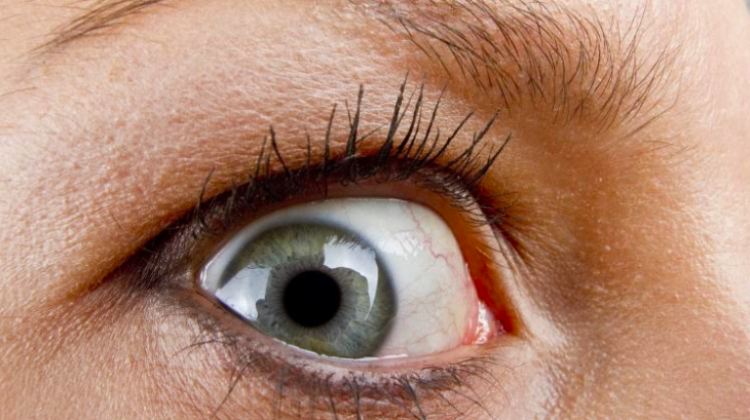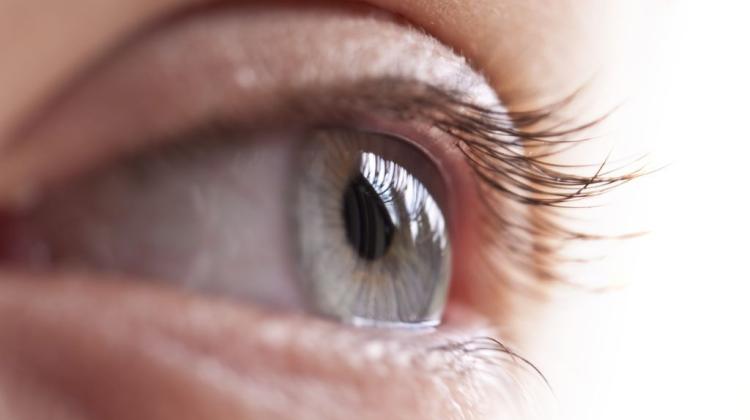Polish scientists are working on treating glaucoma with immortality protein
 PAP/Wojciech Pacewicz
PAP/Wojciech Pacewicz
Researchers from the Medical University of Silesia in Katowice are working on a new method of treating glaucoma, the main cause of irreversible blindness in the world, using an innovative therapy with so-called immortality protein.
Glaucoma is a chronic, neurodegenerative disease that causes damage to retinal ganglion cells and higher levels of the visual pathway. Previous experience and observations carried out on animal models by the research team led by Prof. Joanna Lewin-Kowalik have allowed to develop a therapy that doubles the time from the onset of the disease to the total loss of sight in rats suffering from glaucoma.
The main risk factor is high intraocular pressure, which is why glaucoma treatment is currently based primarily on various methods of its reduction - which is only a symptomatic treatment of this disease. In some patients, the loss of vision progresses despite the use of maximum doses of medications that lower intraocular pressure. There still are no effective causative therapies that prevent nerve cells, such as retinal ganglion cells, from dying.
"Over many years of observations, we have found that a regulatory protein called HuR, found in retinal ganglion cells, can prevent the death of these cells in the course of glaucoma, or even stimulate their regeneration. HuR is sometimes called an immortality protein, because the cells in which it is present in high concentrations are more resistant to damaging factors. This applies to cancer cells, for example. The presence of this protein in cancer cells may contribute to their resistance to chemotherapy" - says the National Science Centre project leader Dr. Adrian Smędowski from the Department of Physiology of the School of Medicine, Medical University of Silesia in Katowice.
His team`s research confirmed lower levels of this protein in the retinas of patients suffering from glaucoma and in rats with glaucoma experimentally induced for research purposes, which may be one of the mechanisms of development of this disease.
"Using the latest methods of genetic engineering, we deliver to the eye an additional gene that is responsible for the production of HuR to increase its content in retinal ganglion cells. We do it by means of injection into the vitreous body of the eyeball. The carriers for the gene are appropriately prepared viruses, which is a proven and safe method, commonly used in gene therapies in various areas of clinical medicine, for example in cardiology or ophthalmology" - explains Dr. Smędowski.
Tests of experimental therapies conducted on the animal model of glaucoma have shown that the methods developed in Katowice can significantly inhibit the progression of the disease, for example rats lose their sight in the course of glaucoma with very high intraocular pressure not after 80 days, but after 120 days, Dr. Smędowski says.
"It may seem short, but thinking proportionately, the period during which the rat retains its sight is 50% longer. Translated to clinical realities, this could mean years. This is a very promising result" - emphasises the ophthalmologist from Katowice.
But we will have to wait at least a few years for the final results that will verify the effectiveness and safety of this therapy. Positive results create a real possibility of transferring this technology to clinical conditions and starting clinical therapies in humans.
The Silesian researchers obtained a grant from the National Science Centre for the years 2018-2021 in the amount of almost PLN 1.2 million for the project that will test the experimental therapy. The project will be carried out at the Department of Physiology in Katowice by the research team composed of Dr. Adrian Smędowski, Dr. Marita Pietrucha-Dutczak and Prof. Joanna Lewin-Kowalik.
It is estimated that about 70 million people worldwide suffer from glaucoma. There are approximately 7.5 million new cases every year, and the total number of patients with glaucoma may reach 76 million in 2020, and even 112 million in 2040. The cunning nature of this disease is associated with the fact that its early stages are asymptomatic, causing slow loss of peripheral parts of the field of view. The disease begins to be noticeable when the visual field reduction is significant and affects the daily functioning of the patients.
The reason for the significant increase in the incidence of this disease is the global society aging process and civilization diseases - primarily diabetes and cardiovascular diseases. In Poland, the problem of glaucoma is estimated at around 700,000 people, of which - it is believed - even half do not know that they are affected.
That`s why Dr. Smędowski, who is also a practicing ophthalmologist at the Prof. K. Gibiński University Clinical Centre in Katowice, specializing in the diagnosis and treatment of glaucoma - reminds that in fact everyone over 40 years of age should undergo a screening test for glaucoma, or at least an intraocular pressure test. This is particularly true for people with glaucoma history in the family, people with diabetes, cardiovascular diseases, people with high level myopia or hyperopia. (PAP)
Author: Anna Gumułka
lun/ zan/ kap/
tr. RL
Przed dodaniem komentarza prosimy o zapoznanie z Regulaminem forum serwisu Nauka w Polsce.


















